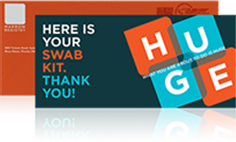Stem cells are the progenitors that produce the major components of the blood. They are found predominantly in the bone marrow, a substance located in the hollow cavities of the body’s large bones.
Stem cells can be collected from two potential sources:
bone marrow and peripheral blood.
Cancer patients suffering from a wide variety of diseases such as leukemia, aplastic anemia, lymphoma, and certain immune disorders, can benefit from stem cell transplantation.
Blood Stem Cells
It’s possible to collect stem cells from the peripheral blood rather than the bone marrow. In order to collect a sufficient quantity of stem cells, injections of a medication called filgrastim must be administered. This mobilizes stem cells to travel from the bone marrow into the circulating blood. The stem cells are collected through a procedure called apheresis, which is similar to the process used in platelet donation. A cell-separating machine filters out the stem cells, which can then be infused in the recipient.
Bone Marrow
Marrow is found in the hollow cavities of the body's large bones. Donation involves withdrawing 2-3 percent of the donor's total marrow from the iliac crest of the hip (posterior aspect of the donor's pelvic bone). There is no cutting or stitching. The procedure involves a needle aspiration, performed using an anesthetic. Typically, the donor enters a medical center’s outpatient facility in the morning and goes home in the afternoon!
Marrow Vs. Blood Stem Cells
Please bear in mind that it is the transplant physicians who choose the stem cell source, not the registry. Donors requested for blood stem cell collection will be counseled on the entire process at an information session. With proper guidance, the ultimate decision to donate is up to the donor. If a donor declines to donate blood stem cells, they may also be offered the opportunity to donate bone marrow.
Donor Commitment
Donating stem cells is a significant commitment, and we want all volunteers to be well educated. If identified as a match, each donor is counseled on the risks and benefits of donation at an information session and receives a comprehensive physical exam. The donor bears no costs associated with the procedure or the tests.
Stem cell donation is a voluntary process. Prospective donors are never under pressure to register. In fact, we ask that you take some time to consider your commitment in order to avoid giving false hope to patients in need. For the patient, there is no turning back once the pre-transplant treatment begins. Without the donor's healthy stem cells, the patient would die. Thus, it is crucial that the donor be committed to participate once the intent to donate is given.
The Transplant
Several days prior to the donor's stem cell collection, the patient begins pre-transplant conditioning, usually radiation and chemotherapy. This eradicates the patient’s diseased immune system, and the patient is kept in protective isolation to prevent infection. The donor's stem cells are given intravenously to the recipient. The stem cells migrate through the circulatory system to the hollow cavities of the bones. If all goes well, the stem cells engraft within a few weeks and begin to manufacture healthy blood cells, giving the patient a second chance at life! If both donor and recipient agree—this must be mutual—they may be able to meet one year after the transplant (although laws may vary in different countries). Recuperation is lengthy, but the patient enjoys a second chance at a full life thanks to the kindness of a stranger. And that someone may be you.
Join the registry
Give a simple cheek swab to join the registry.
Confirmatory Typing
In the future, you may be called as a potential match for a patient. If so, you will be asked to have a blood test.
Work-Up
If the blood test confirms that your tissue type matches the patient, we will explain the whole process in detail. You will have a physical exam to ensure you are in good health and fit to donate.
The Donation
You will donate either peripheral blood stem cells or bone marrow.
The Transplant
Your donation is transplanted in the patient. Congratulations - you have saved a life!
to Save
a Life
Speed Swab Kit

Help give someone the BIGGEST day of their life!
Order your speed swab kit today and get on the registry!
Order Your Kit
